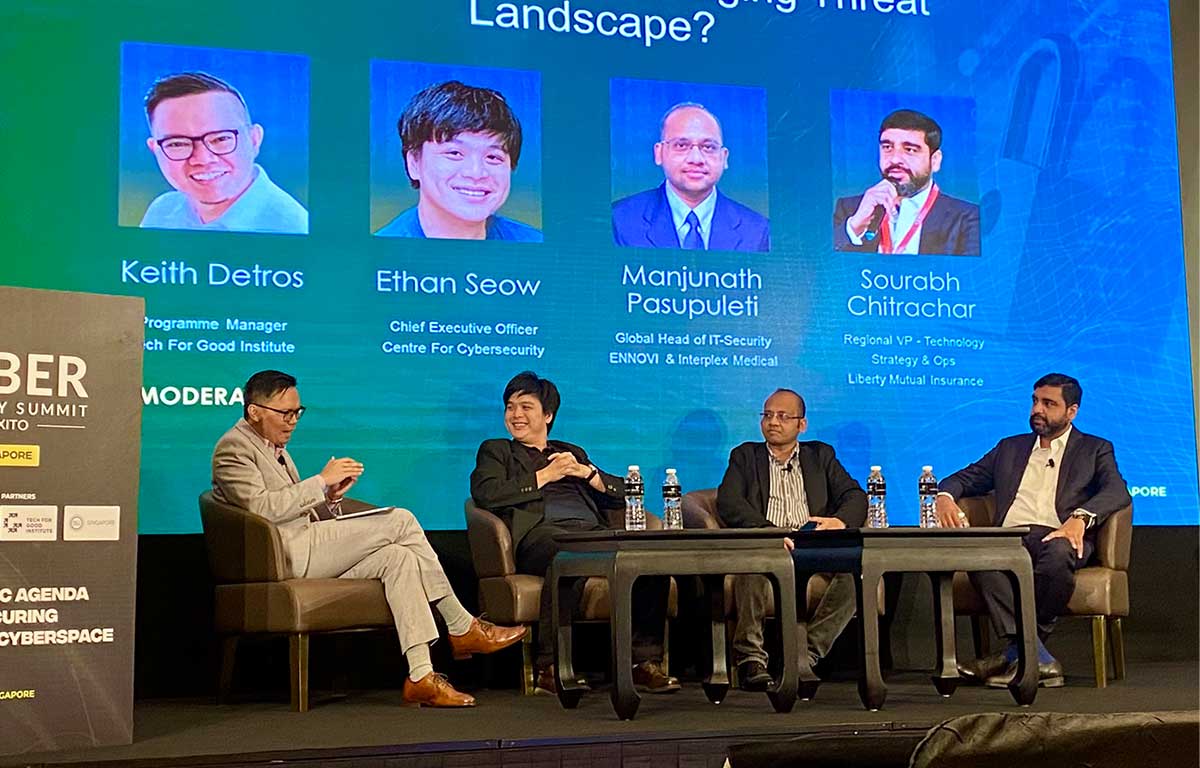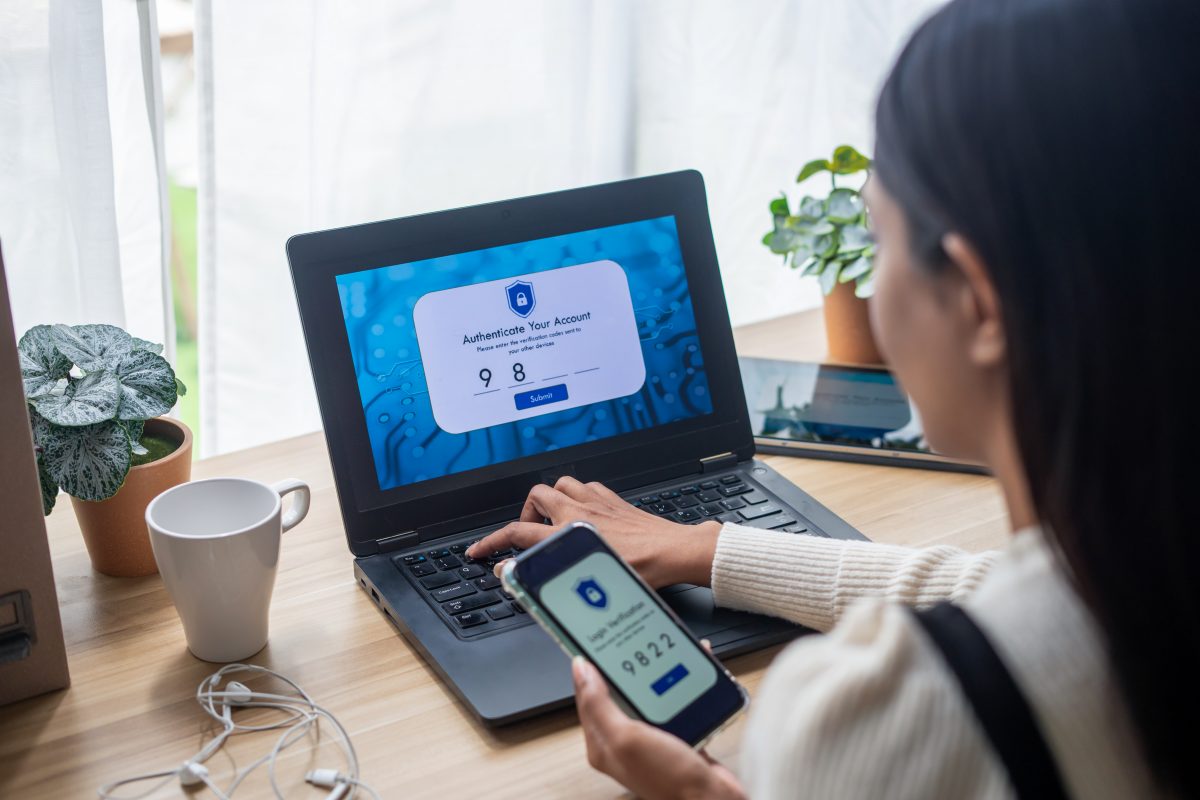
From left to right: Keith Detros, Programme Manager, Tech For Good Institute; Ethan Seow, Chief Executive Officer, Centre For Cybersecurity; Manjunath Pasupuleti, Global Head of IT-Security, ENNOVI; Sourabh Chitrachar, Regional VP, Technology Strategy & Ops, Liberty Mutual Insurance.
In the age of rapid digitalisation, organisations globally confront an ever-evolving array of risks in the digital space. Generative AI, large language models, and deep fakes, coupled with the increasing shift towards automation, has heightened the complexities of the cyber threat landscape. For example, phishing and ransomware tactics have also increased in sophistication by leveraging emerging technologies.
To safeguard against an evolving threat landscape, there is a need for companies to focus on solutions beyond mere technological means. Organised by Exito and supported by the Tech for Good Institute, ISACA Singapore, Centre for Cybersecurity, and ISC2 Singapore, the 20th edition of the Cybersecurity Summit in Singapore dedicated a panel to discuss how human-centric approaches are just as critical as tools, frameworks, and processes in fortifying cyber security defences.
Distinguished cyber experts provided invaluable insights into dynamic threat assessment, resilient security strategies, and highlighted the importance of fostering a culture of cybersecurity within organisations.
Moderator and panellists:
- Keith Detros, Programme Manager, Tech For Good Institute
- Ethan Seow, Chief Executive Officer, Centre For Cybersecurity
- Manjunath Pasupuleti, Global Head of IT-Security, ENNOVI
- Sourabh Chitrachar, Regional VP – Technology Strategy & Ops, Liberty Mutual Insurance
Key takeaways:
1. Leveraging Frameworks and Technology to Bolster Cyber Defences
Before delving into the importance of people, the experts first noted the importance of adopting globally recognised frameworks and emerging technologies to improve cybersecurity. This includes trusted frameworks such as the recently updated National Institute of Standards and Technology’s Cybersecurity Framework 2.0 and creating a zero-trust environment. For smaller organisations, due diligence in cyber practices are needed including regular patching of systems and software updates. The panel also noted the importance of leveraging emerging technologies to ensure that systems and networks are safe and secure. This includes the utilisation of AI-powered tools to streamline threat intelligence and incident response, which in turn enables effective detection of potential vulnerabilities and mitigation of cyber risks.
2. Integrating Cybersecurity into Organisational Culture
The experts, however, stressed that processes and technologies will not magically protect a company’s data. Integrating cybersecurity principles and practices into the organisation’s culture is key. One best practice is to foster collaboration and knowledge-sharing across departments to ensure a holistic approach to cybersecurity. This includes various teams from finance, legal, public affairs, operations, etc. Furthermore, motivating users within the organisation to enhance their cybersecurity awareness is crucial, with an emphasis on the importance of the individual in the cyber defence link. In addition, strengthening the third-party or vendor assessment mechanisms also protects the organisations from supply chain attacks. This means that cybersecurity as a culture should not only be developed with internal teams, but also teams that will be onboarded or connected to the same network.
3. Prioritise People-Centric Approaches
Recognizing that cybersecurity is not solely the responsibility of leaders or the IT department, the panel emphasised the importance of empowering everyone in the company to take cybersecurity as a responsibility. Organisations should invest in tailored cybersecurity awareness and training programs designed for different roles within the organisation. Continuous upskilling and adaptation were highlighted as essential, with experts advocating for continuous learning to stay abreast of evolving threats. The discussion delved deeper into implementing a combination of classroom, simulation-based, and experiential learning methods to enhance employees’ cybersecurity knowledge and skills. Furthermore, organisations should encourage open dialogue and collaboration between leaders, the cybersecurity team and users as means to collectively strengthen cybersecurity defences.



